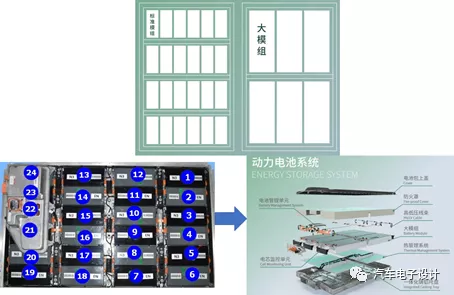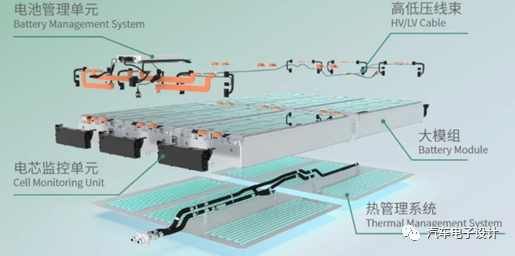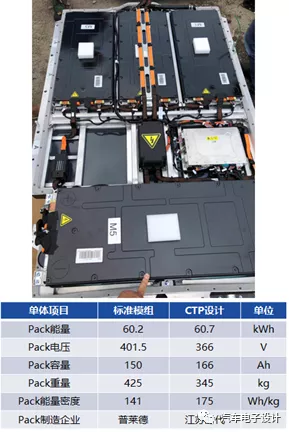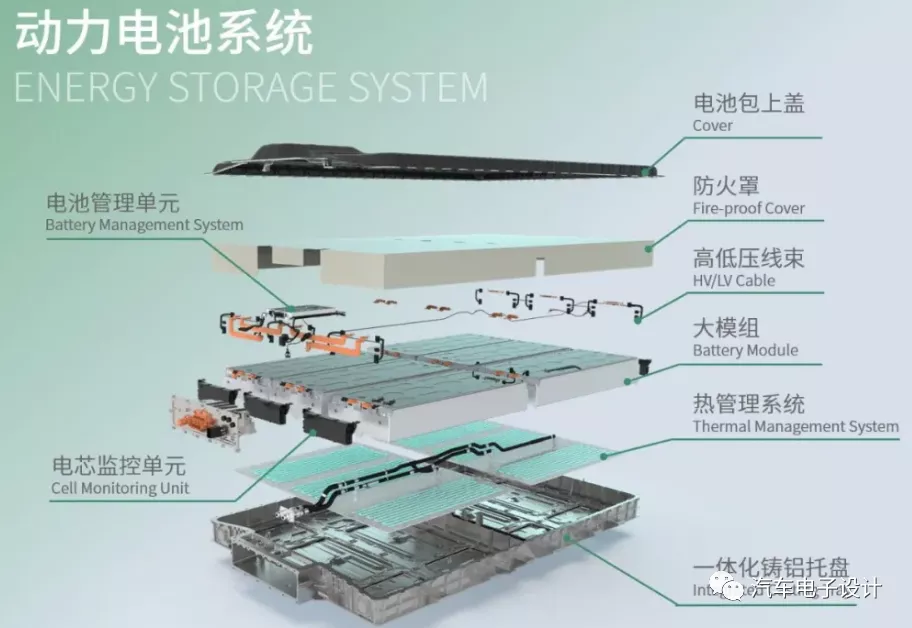Introduction
Today, Green Core released the latest solution for Roewe ER6, “How to Ensure Safety and Reliability while Increasing Energy Density? – Analysis of ER6 Battery System”. Starting from the second half of this year, large module and CTP solutions will be released one after another. We can summarize the current characteristics of the solutions represented by large module and CTP based on current information.
Architecture of Large Module
ER6 is a typical transition from 355 modules to large modules. The battery design is to disassemble and reorganize multiple standard modules according to the structure design of the entire Pack, and customize the large module solution for Pack system integration. In this solution, we can see that:
1) The number of modules is reduced, and as a result, the number of parts is greatly reduced. The work mainly related to module fixation, busbar connection, and low-voltage connection is completed inside the module. 2) In the ER6 case, the volume energy density has increased by 34%, and the battery pack volume energy density has also increased by 34%. In an equally sized battery pack, the energy has increased by 20 kWh.

The following picture is very typical. CMU is simplified from the previous master-slave structure to three, the water cooling plate evolves from each module to each section, and now there are only two water cooling plates, and the corresponding pipeline has also been reduced to a small part. In fact, there are only 8 busbars simply put.

I think the core issue now still lies in the route of using large shell cells and 811 chemical system. There is a big difference when the pressure relief valve is opened, and the tolerance of cells also varies greatly. Using the method of large module, more energy can be effectively placed in the same shell, so that it is not necessary to upgrade the energy by upgrading the cells – this approach effectively controls the problem of balancing energy needs and safety.
Differences between CTP and Large Module
As luck would have it, Beiqi’s EU5 is the first to announce the use of CTP. In this case, it also switches from 355 modules to a 5 large module CTP solution. The size of the modules is decomposed based on the original size of Pack, and then the length and width are co-planned for design.
We can understand that the development of CTP into passenger cars is based on the Pack design of previous models, and segmentation of the size is carried out through co-planning, using dual-row modules to increase the module size to 12 kWh (twice the size of 590 modules).The main difference in the design of the large module is that the GB standard has removed the safety of the module, only considering the safety and performance of Cell and Pack. Therefore, if the reconfigured 12 kWh large module cannot support the original structural design requirements, it is considered to borrow the design of Pack and use glue to bond Pack and this large module to form integration, which is currently the biggest turning point.
Of course, with similar power, the weight reduction effect is about 80 kg. The reduction of these weights means the reduction of cost from cell to Pack, mainly in this aspect.

Conclusion
In the second half of this year, most car companies will update their new generation of battery systems. In a sense, MEB’s design from the previous MQB’s 390 module to the 590 module is also a large-scale module design. The customized design of the double-row large module improved based on the original cell specifications will be gradually introduced to the domestic market. All car companies have started the next stage of the 500 km and 600 km military competition, except for Tesla.
This article is a translation by ChatGPT of a Chinese report from 42HOW. If you have any questions about it, please email bd@42how.com.
